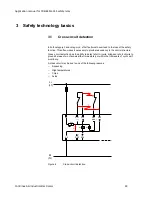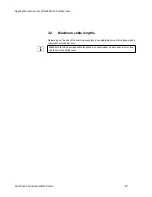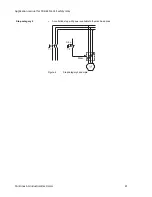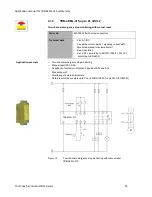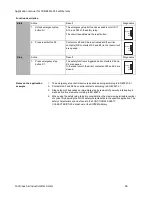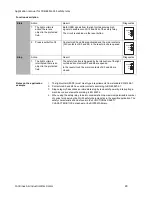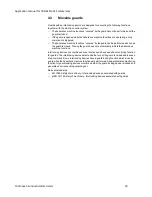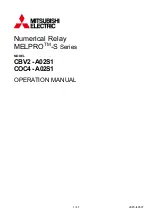
Application manual for YRB-4EML-31S safety relay
Contrinex AG Industrial Electronics
15
F Frequency and duration
<
1 hour
5
> 1 hour to < 1 day
5
> day to < 2 weeks
4
> 2 weeks to < 1 year
3
> 1 year
2
W Probability of a hazardous event
Frequent
5
Probable
4
Possible
4
Seldom
3
Negligible
2
2.3
Practical procedure according to EN ISO 62061
In practice, the following steps have proven effective when designing safe controllers
according to EN 62061.
2.3.1
Specification of requirements for the safety-related control
function (SRCF)
The safety function must be defined first. This information is derived from the risk
assessment.
Example:
Trigger event:
Opening the safety door.
Response:
The robot drive is set to a safe stop state. The power
semiconductor pulses are disabled.
Safe state:
Power circuit has no power.
2.3.2
Determination of the required safety integrity level (SIL)
The required SIL is determined in combination with the safety function within the framework
of the higher-level risk assessment.
Effect
Severity
Class
Class
Class
Class
Class
S
3 - 4
5 - 7
8 - 10
11 - 13
14 - 15
Death, loss of an eye or arm
Permanent, loss of fingers
4
SIL 2
SIL 2
SIL 2
SIL 3
SIL 3
3
SIL 1
SIL 2
SIL 3
Reversible, medical treatment
Reversible, first aid
2
Other measures
1
SIL 1
SIL 3
SIL 1
P Avoidance
+
+
Impossible
4
Possible
3
Probable
2
Figure 5
Example of specifying the SIL (according to EN 62061)
2.3.3
Drafting the safety-related electrical control system
(SRECS)
This step involves the technical pre-planning of the safety function, taking possible
technologies and components into account. The safety-related components and parts must
then be identified for later verification.


















